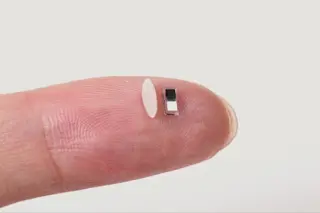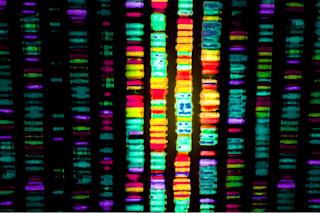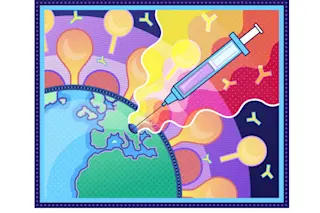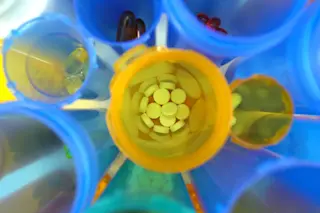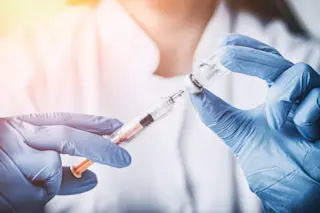The chime on H. Lee Sweeney’s laptop dings again—another e-mail. He doesn’t rush to open it. He knows what it’s about. He knows what they are all about. The molecular geneticist gets dozens every week, all begging for the same thing—a miracle. Ding. A woman with carpal tunnel syndrome wants a cure. Ding. A man offers $100,000, his house, and all his possessions to save his wife from dying of a degenerative muscle disease. Ding, ding, ding. Jocks, lots of jocks, plead for quick cures for strained muscles or torn tendons. Weight lifters press for larger deltoids. Sprinters seek a split second against the clock. People volunteer to be guinea pigs.
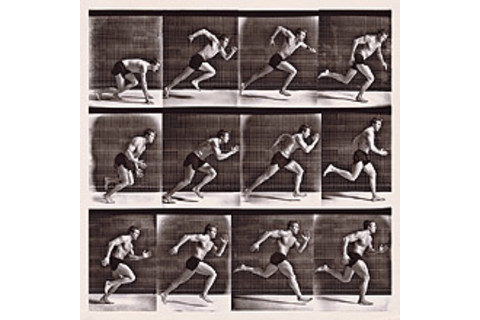
Gene therapy could do for athletes what photo manipulation has done for this runner. But performance-enhancing drugs would undermine amateur athletics, which by definition are supposed to show how far natural skills can be advanced, says Richard Pound, president of the World Anti-Doping Agency. “I want athletes,” he says, “not gladiators.”
Sweeney has the same reply for each ding: “I tell them it’s illegal and maybe not safe, but they write back and say they don’t care. A high school coach contacted me and wanted to know if we could make enough serum to inject his whole football team. He wanted them to be bigger and stronger and come back from injuries faster, and he thought those were good things.”
The coach was wrong. Gene therapy is risky. In one recent experiment, a patient died. In another the therapy worked, but 2 of the 10 human subjects—infants—got leukemia. To some, such setbacks are minor hiccups, nothing to worry about if you want to cure the incurable or win big. In the last few years, Sweeney, a professor of physiology and medicine at the University of Pennsylvania, and a small cadre of other researchers have learned how to create genes that repair weak, deteriorating, or damaged muscles, bones, tendons, and cartilage in a relatively short period of time. They can also significantly increase the strength and size of undamaged muscles with little more than an injection. So far, they have worked with only small laboratory rodents—mice and rats. Clinical trials on larger animals, like dogs and cats, are currently not being funded. Human testing is years away, but gene therapy has already become a controversy in professional and amateur sports, where steroids, human growth hormones, and other performance-enhancing drugs have been a problem for years. With the Olympics opening in Athens on August 13, the subject is only going to get hotter. “It’s the natural evolution of medicine, and it’s inevitable that people will use it for athletics,” Sweeney says. “It’s not clear that we will be able to stop it.”
Sweeney became interested in gene therapy in 1988, shortly after scientists pinpointed the gene responsible for Duchenne muscular dystrophy. He decided to find out if there was a way to counteract the disease genetically. Children with muscular dystrophy lack the gene required to regulate dystrophin, a protein for muscle growth and stability. Without dystrophin, muscle cells atrophy, wither, and die. Sweeney’s plan was to introduce the dystrophin gene by hitching it to the DNA of a virus that can transport genes into cells. As it turned out, viruses were too small to carry that gene. So Sweeney began searching for a smaller gene that would fit inside a virus and at least mimic dystrophin. He settled on a gene that produces insulin-like growth factor (IGF-I), a powerful hormone that drives muscle growth and repair. The IGF-I gene fit nicely inside a virus and was more appealing because it could potentially treat several kinds of dystrophies. In a series of experiments beginning in 1998, Sweeney and his team at Penn injected IGF-I genes into mice and rats and watched in wonder as damaged muscle tissue repaired itself.
Today Sweeney spends much of his time scrutinizing the rats and mice he has injected with IGF-I genes. He puts them through a rigorous exercise program, strapping weights to their hind legs and repeatedly prodding them up a three-foot-high ladder. After two months, the rodents can lift 30 percent more weight, and their muscle mass has swollen by a third—double what his control group of mice (those without IGF-I) can achieve with weight training alone. In another experiment Sweeney gives IGF-I to mice but curbs their exercise. They too bulk up, jumping 15 percent in muscle volume and strength.
On a recent visit to Penn, I asked Sweeney to show me the mice. He led me to a cramped lab where a bubbling tank of liquid nitrogen spewed a cold fog across the floor. Rows of transparent plastic shoebox-size containers were stacked on a chrome pushcart, a pungent, musky odor emanating from each box. Inside were several chocolate-colored mice. Sweeney pointed out two groups in neighboring pens and asked, “Which set do you think we’ve given IGF-I?” I lean in for a closer look. The mice in the left box no doubt have been watching Buns of Steel videos. Each mouse boasts a rock-hard rump and shockingly large and perfectly chiseled gastrocnemius and soleus muscles (which, in humans, make up the calf). In the adjacent cage, two control mice look scrawny by comparison. The results are impressive and make me wonder just how easy it would be for someone to reproduce Sweeney’s results in a human. “I wouldn’t be surprised if someone was actively setting up to do it right now,” he says. “It’s not that expensive, especially if you are just going to do it to a small population of athletes.”
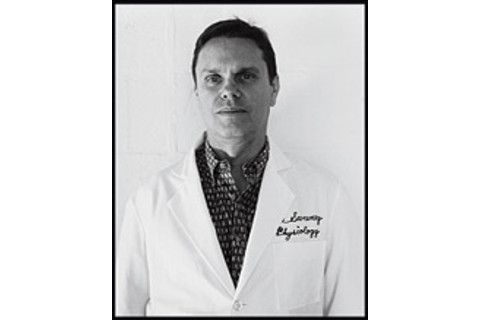
Photograph by Jennifer Tzar
“It’s amazing that people don’t get the safety issues” of gene therapy, says University of Pennsylvania geneticistH. Lee Sweeney. “Justbecause we haven’t seen any problems in animals doesn’t meanwe won’t seea problemin people.”
That is exactly what worries officials at the World Anti-Doping Agency and the U.S. Anti-Doping Agency. The world agency has put gene doping on the International Olympic Committee’s 2004 list of prohibited substances, which includes everything from cough syrup to cocaine. The prohibition defines gene doping as “the non-therapeutic use of genes, genetic elements and/or cells that have the capacity to enhance athletic performance.” But no one thinks for a minute that gene doping isn’t happening. “Sport is supposed to be fun,” says former Olympic swimmer Richard Pound, now president of the world agency and chancellor of McGill University in Montreal. “But it is surrounded by people who are conspiring to destroy the athlete and the game.”
Gene doping is different from other performance-enhancing techniques. Human growth hormone, for example, occurs naturally in the body and will accelerate cell division in many types of tissue. Taken in high doses, it can provide a head-to-toe muscle boost and can even add a few extra inches of height. Anabolic steroids, which President Bush attacked in his State of the Union address in January, are chemical relatives of testosterone. They are believed to be in wide use in professional sports such as baseball, football, basketball, and hockey—although most players deny it. They are also popular with weight lifters because they foster new muscle growth in the upper body. Synthetic erythropoietin, or EPO, a chemical naturally produced by the kidneys, is a favorite of cyclists, triathletes, marathon runners, and people who engage in long periods of aerobic activity. EPO flushes fatigued muscles with oxygen to stave off exhaustion.
These and other substances can be detected in blood and urine tests because they drift through the circulatory system for hours, days, or months. But gene doping is not as easy to spot. Genetic modifications become an indistinguishable element of DNA in targeted muscles. The only way to prove that someone has experimented with gene doping is to biopsy a suspicious muscle and look for signs of DNA tampering. It’s not hard to imagine that most athletes will object to having bits of flesh sliced from the very muscles they’ve spent years honing. “Athletes aren’t going to say, ‘Hey, take a muscle biopsy before my 100-meter run,’” quips Johnny Huard, who developed his own set of muscle-building genes as professor of molecular genetics, biochemistry, and bioengineering at the University of Pittsburgh School of Medicine.

Graphic by Bryan Christie Design click to enlarge (132k)
Gene doping involves incorporating healthy growth-factor genes with the DNA in a viral carrier. The virus is then injected into the muscle, where it readily infects the target cell and delivers growth-factor genes to the nucleus. After integrating with chromosomes, the genes exit the nucleus via messenger RNA (mRNA). These strands serve as templates for the production of growth-factor proteins, and ribosomes assist in the conversion. The proteins affect surrounding muscle tissues, helping them to strengthen and to heal.
Lack of detection makes gene doping extremely attractive to athletes. But its muscle-building powers are the big draw. Sweeney predicts gene-doped athletes would readily surpass their personal best and could even smash world records. Sprinters and weight lifters would see the most benefits, their peak speeds and maximum strength amplified. “Athletes could push their muscles harder than ever before because their muscles will repair themselves so much faster,” he says. “And they won’t have to retire when they’re 32.”
The anti-doping agency officials are convinced that athletes will try gene doping, despite its dangers. “In the current climate there is even more pressure than when I was competing,” says Norway’s 1994 Olympic speed skating gold medalist Johann Koss, a physician and former member of the world agency’s executive board. “People will take shortcuts. The reward at being the best in the world offers huge financial gains.” Pound cites a poll of American athletes who said they would take any drug that would help them win, even if they knew the drug would eventually kill them.
“Nobody ever said athletes are the smartest people in the world,” Pound says. “This is why there has to be parentalism. This is why I don’t let my kids drive the car at age 13, even though they tell me they can do it safely.”
Pound has good reason to worry. The newest therapies work on mice and rats with no apparent adversity. Until clinical trials, however, it’s impossible to know exactly what the effects will be on humans. Sweeney acknowledges that IGF-I could make precancerous cells grow faster and stronger.
Huard says “we have absolutely no clue” about side effects, but he and others are worried about an immunologic reaction to the virus that serves as a carrier. That is what killed 18-year-old Jesse Gelsinger, who had a rare liver disease and was participating in gene therapy research at the University of Pennsylvania. The Food and Drug Administration immediately terminated all gene therapy trials at Penn, and the incident prompted federal regulators to establish new rules for human gene therapy research. Another concern is that the vector virus might run amok. Scientists believe that’s what happened during a 1999 French gene therapy trial on a group of 10 infants with X-SCID, an immune deficiency disorder known as boy-in-the-bubble syndrome. Researchers engineered a virus to carry a replacement gene to repair the immune systems of the sick children. The technique cured nine of the children, and scientists deemed the trial an overwhelming success. Nearly three years later, however, doctors diagnosed two boys in the study with T-cell leukemia. Somehow the virus carrier—not the replacement gene—had managed to touch off the blood disease. In future tests doctors will either modify or change the carrier.
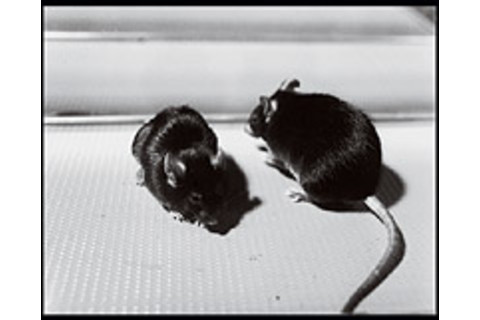
Photograph by Jennifer Tzar
Like all mammals, including humans, mice lose up to a third of their muscle mass and power as they get older. But gene therapy can arrest this loss. The aging mouse on the right increased its body strength by 27 percent after injections of the IGF-I gene, which fosters muscle growth and repair. The smaller mouse on the left is a control.
Those two incidents sparked widespread condemnation that stifled nascent research initiatives. Today some clinical gene therapy trials on humans are under way with tighter safeguards, but most experiments are confined to rodents. Despite the medical and regulatory setbacks, the largest roadblock to commercializing the technology is money. “We’ve been struggling with getting dog studies [under way] because of the cost,” says Sweeney. But once he gets funding, he’s ready to go. His team has already made a version of the IGF-I vector to test on dogs with muscular dystrophy. If successful, he’ll begin trials on children with muscular dystrophy sometime before the end of the decade. Sweeney keeps a list of telephone numbers from desperate parents who’ve contacted him.
Meanwhile, amateur athletics is trying to come to grips with gene doping. In March 2002, Theodore Friedmann, who directs the program in human gene therapy at the University of California at San Diego and has advised the National Institutes of Health and congressional leaders on gene-related issues, organized a three-day workshop for the world agency. Scientists, regulatory officials, and athletes gathered in Cold Spring Harbor on Long Island to discuss gene doping. “People intent on subverting the gene therapy will do so,” says Friedmann. “The technology is too easy. It’s just graduate student science.”
That bothers Arne Ljungqvist, the world agency’s health, medical, and research committee chairman, who doles out several million dollars in grant money every year to research groups looking at gene doping and its detection. Additionally, Friedmann, who serves on the agency’s anti-doping commission, is working to establish testing protocols. “So far the results are sitting in the form of research advances,” he says, “but not in the form of real detection methods.” One concept is to hunt for what Friedmann calls physiological fingerprints. Introducing foreign genes into muscles, he says, “is going to produce changes in the way muscles secrete things into the blood and, therefore, into the urine.” In the same way breast and colon cancer alter the pattern of proteins in the bloodstream, genes linked to IGF-I or EPO will, in theory, leave traces. Surveillance organizations like the U.S. and world agencies “will look for those signatures and patterns that can be tied, with confidence, to the existence of a foreign gene,” Friedmann says. Although it may be years yet in development, Friedmann envisions a noninvasive imaging device akin to an X-ray that detects bits and pieces of leftover viruses used to introduce performance-enhancing genes.
Ironically, the misuse of gene doping in sports is more clearly defined than its proper use. When physicians begin curing athletic injuries with gene therapy, the boundaries of healing and enhancement will blur. “There will be a fuzzy line between what is a medically justifiable treatment of injuries and what is performance enhancement,” says Friedmann. “There is nothing terribly noble about an athlete destroying a career with an injury if one can medically prevent or correct it. I would be hard-pressed to say that athletes are not eligible for this or that manipulation. It has always been obvious that there are therapeutic-use exceptions. There is no reason to think that therapeutic-use exceptions would be disallowed for genetic tools.”
That, of course, opens the door for abuse. In some instances, athletes would require only minuscule improvements to nudge them into the winner’s circle. “For Olympic athletes, they don’t need to see a drastic change,” says Johnny Huard. “Sometimes the gold medalist is only a fraction of a second over the silver.” It would be very easy for a team physician to let therapeutic genes continue working for a few hours, days, or weeks after an officially sanctioned treatment ends.
With no viable testing mechanism on the horizon, the possibility remains that at least one of the 10,000-plus Olympic competitors in Athens this summer will have experimented with gene doping. By the 2006 Winter Games in Turin, Italy, it’s even more likely. And by the time Beijing 2008 rolls around, it could easily be a sure thing.
Discuss this article in the Discover Forum



